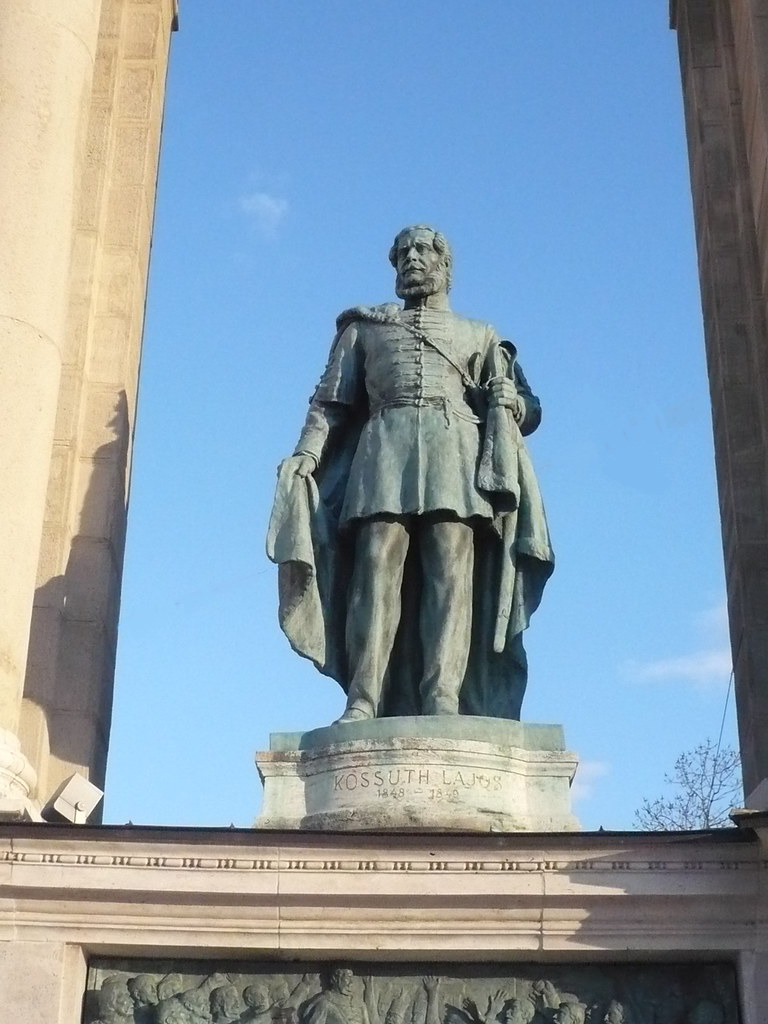The formation and expansion of Kossuth County in the 1850’s discussed in The Odd Case of Iowa’s Largest County pointed to a simple question. So who was Kossuth? That string led me to Lajos Kossuth. I was wholly unfamiliar with the name. Also I wondered why a county deep within the American heartland would honor a former Governor-President of Hungary because people of Hungarian ancestry didn’t settle this area.
Placename Concentration

However, Iowa wasn’t the only Kossuth reference in the United States either. A quick check of the Geographic Names Information System uncovered additional populated places. They spread broadly into Indiana, Mississippi, Maine, New York, Ohio, Pennsylvania, Texas and Wisconsin, plus a Kossuthville in Florida.
The geographic placement brought a couple different thoughts to mind. Immediately I noticed the Kossuth tribute phenomenon seemed confined to the eastern half of the United States. So places named in Kossuth’s honor probably began in close proximity to his zenith. That happened at the midpoint of the 19th Century.
However, Western states didn’t participate. They didn’t have a lot of organization and hadn’t started naming lots of stuff during the Kossuth craze. So this implied his popularity in American memories must have been brief. The Western states ignored him when they started naming places in earnest a bit later.
Ever Popular in Hungary

Lajos Kossuth de Udvard et Kossuthfalva was and continues to be a revered figure in Hungary. He sought an independent Hungary. Then for a brief period he actually achieved it.
Hungary was under the control of Austria’s Habsburg Empire. Civil dissatisfaction and unrest had been ongoing for a number of years. Finally in 1848 it sparked a revolution. Hungary declared its independence in 1849 with Kossuth serving as the Governor-President. However it wouldn’t last long. The Austrian army teamed with Russia and invaded later that year. Kossuth went into exile where he continued to advocate tirelessly for Hungarian independence until he passed away in 1894.
There are tributes to Lajos Kossuth all over Hungary today, including his likeness within in the statue complex at H?sök tere (Heroes’ Square), a major plaza in Budapest. Street View gives H?sök tere decent coverage if you want a more expansive understanding of its geographic context. Certainly, one would expect numerous memorials and commemorations in Hungary. But that didn’t explain his prevalence in the United States.
Alignment with American Ideals

Distinct elements of Kossuth’s struggle resonated with audiences far beyond Hungary. Those included Europeans hoping to establish democracies. It also included Americans who had already accomplished that feat. Kossuth drew inspiration from the American Revolution and in turn many citizens of the United States viewed Kossuth as carrying that same banner. He served as an instrument for spreading American ideals to other parts of the world. It helped that Kossuth proved very adept at publicizing his cause through his skills as a prolific orator, writer and media sensation on both sides of the Atlantic.
Statues of Kossuth rose in the United States too, such as the one in New York City, above (map).
An Active Exile

Lajos Kossuth traveled widely after his exile to promote Hungarian independence. This including a wildly-successful tour through the United States. As described by The Hill after the dedication of a bust of Kossuth placed in the U.S. Capitol building in 1990:
“This Hungarian statesman’s presence in the U.S. Capitol might seem arbitrary, but in fact Kossuth’s life was intertwined with the life — and values — of American democracy… The U.S. assisted him in traveling to America, where he ultimately spent one year. Kossuth became one of the first foreign statesmen to address a joint session of Congress, speaking to the body in 1852 about democracy… Moreover, throughout his year in the U.S., Kossuth made more than 300 speeches to thousands of American citizens. It is estimated that more than half of the nation’s population at the time heard him speak”
Sorry about the random person appearing in the photo. Unfortunately there weren’t any other decent photos available and one has to use what one can find. This much later tribute to Kossuth served a means to regenerate awareness of his deeds that have largely faded from collective consciousness in the United States. It was commissioned by The American Hungarian Federation. Rep. Tom Lantos sponsored the bust. He was a native of Hungary and the only member of the U.S. Congress who was a Holocaust Survivor.
The United States largely forgot about Kossuth. However his name would have been well-known in the 1850’s. Thus, the creation of Kossuth County in Iowa in 1851 made perfect sense. Residents of the time viewed it as a popular and logical choice. It represented notions of freedom and independence.

Leave a Reply